How to (properly) Cut A Cigar: The Guide
One of the easiest ways to ruin an otherwise incredible cigar is to give it an improper cut. I have learned this, quite sadly, the hard way over my 22 years of enjoying handmade premium cigars.
The only thing worse than a plugged cigar is a cut that unravels your cigar’s wrapper or otherwise causes damage. It is in this spirit that I write this article, providing you with some of the best practices, as well as examples of what not to do, related to the cutting of your cigars.
The Basics of Cigar Cutting (Just the tip)
Keep it simple. Not only is this excellent advice for life and business, but it is also the philosophy that I believe best applies to the cutting of premium cigars.
The one and only point to cutting cigars is to open the capped end of the cigar so that air channels are exposed – creating a “draw” within the cigar. In cutting your cigar, the aim should always be to hit the Goldilocks zone of removing as little of the cap as possible while still removing just enough of the capped end of the cigar to fully open the air channels that exist within a well-bunched handmade premium cigar. This is how the cigar breathes, or “draws”.
In other words, you want to cut the very tip of the cap of your cigar and only the very tip of the cap of your cigar.
“Advanced tip: When in doubt, cut less.”
You can always make a second, and deeper cut to your cigar after lighting (as necessary). This is especially true with tapered vitolas, like torpedos, belicosos, chisels, and salomones. If you cut your cigar deeper than the cap applied to the capped end of the cigar, you will cause your cigar wrapper to unravel, which is a nightmare.
Different Cutting Methods (Guillotine, Scissors, V-Cut, and Punch) Work Better with Different Vitolas
First things first: I, personally, only use a Guillotine cutter or scissors on my cigars. This is a personal preference, but I do not like v-cutters or punch cutters. V-Cutters are cigar cutters shaped like most other handheld cigar cutters, but whose cutting blade is wedge-shaped, like the letter V, instead of straight. According to various cigar writers, V-Cutters were significantly more popular in the early 1900’s.
Meanwhile a punch “cut” does not really cut the cap of the cigar. It pierces, or punches, the cap only. The problem with punch cuts is that they only open a small circle in the cap of the cigar – often creating insufficient draws and too narrow, and concentrated, of a passageway for your cigar smoke.
To start, a simple guillotine cutter or scissor will provide you with the most flexibility and it work for any vitola or shape. These traditional methods of cigar-cap-removal keep it simple: they remove the maximum surface area of the cap of the cigar while allowing the shallowest cut possible.
My second piece of advice is to only use guillotine cutters and cigar scissors that are well-maintained with regularly-sharpened blades (more on this below).
However, if you do enjoy using a V-cutter or a punch cutter, I would advise that you only use these types of cutters on rounded, or parejo, vitolas (these are the traditionally shaped cigars, straight from the foot of the cigar to the cap, with a flatly rounded cap). Although it can be done, using V-cutters or punches on figurados or other non-parejo cigars – cigars with pointed caps – will lead to a messier, awkward, cut.
A good rule of thumb is the flatter the cap of your cigar is, the more non-traditional of a cutter you may use on that cigar. On the converse, the more pointed the cap of your cigar, the more you ought to use a flat cutter, like a guillotine or scissors, to cut your cigar.
The “Dickman Cut” – A 45 Degree Angled Cut Perfect for Figurados
Allegedly named after former J.C. Newman/Arturo Fuente sales rep, Joe Dickman, the Dickman cut is a cigar cut at a 45-degree angle. This style of cut allows the smoke to hit your palate at different angles, creating a unique smoking experience. The Dickman cut is perfect for figurados or all types because it maintains the taper of these vitolas while increasing the surface area of the cut. The Dickman Cut is the ideal way to cut a torpedo cigar as shallowly as possible while still increasing the air flow of that cigar’s draw.
The Most Overlooked Aspect to Cigar Cutting – Keeping the Blades Sharp
Even among seasoned cigar lovers, maintaining the sharpness of our cigar cutters’ blades is frequently overlooked. The blade(s) of your cigar cutter – whether that cutter is a guillotine, scissors, a V-cutter, punch, or even a full stationary tabletop cutter with handle – are just that: they are blades. And just like the knives in your kitchen will dull with time, and need to be sharpened, the same is true with cigar cutters.
I was reminded of this truth when I recently purchased an antique set of Davidoff cigar scissors, manufactured circa the 1970’s. Although the vintage cigar scissors were beyond beautiful (before being scratched by me during sharpening; more on this below), they arrived with dull blades.
I knew that the blades of these antique Davidoff cigar scissors were dull because they were causing the wrappers of my cigars to split open wildly (nearly exploding) during cutting. If you are experiencing problems with your cigar wrappers splitting during cutting, then you likely need to sharpen the blades of your cutter.
Depending on the amount of use (and thickness of cigars being cut), I recommend that you sharpen your cigar cutter blades at least once a year. Higher quality blades will maintain their sharpness for longer than cheaper, lower quality blades. Most disposable cigar cutters use low quality steel for their blades and should be discarded after they go dull, and NOT sharpened. (On the other hand, I have a Paul Garmirian cutter made with a Sheffield steel blade that has not lost its sharpness, at all, after over two years of cuts).
Tips on How to Sharpen Your Cigar Cutter
I do not recommend that you attempt to debur or sharpen your cigar cutters with aluminum foil. Although using folded aluminum foil can provide a short-term improvement to a dull blade, aluminum foil is a very poor way to sharpen the blades of your cigar cutters. Not only will the sharpening effect be short-lived, but aluminum foul can damage the edge of your cigar cutter’s blade.
What I do recommend is that you use an actual whetstone, or handheld metal knife sharpener (the common type what comes in blocked knife sets, with a handle connecting to a long metal rod used to sharpen), just as you would to sharpen a kitchen knife.
For all cigar cutters other than disposable cutters, you can remove the blades from the cutter and sharpen them on a whetstone, like you would the blade of any other knife.
-
Grab a mini screwdriver or Xikar lighter tool.
-
Unscrew the case to your cigar cutter (or, in the case of cigar scissors, unscrew and separate the scissors blades) and remove the blades. Remember that not all cutters can be taken apart (and therefore, sharpened). If you can access the tiny screws that fasten the case of the cutter together, then you can take that cutter apart and sharpen its blades.
To repeat: this is not worth the trouble on cheaper, disposable, cigar cutters.
-
Soak whetstone in water.
-
Sharpen blades against the wetted whetstone. To use a whetstone, face the blade of your cigar cutter/scissors away from you and on the whetstone at the angle of your blade (typically a 15-20 degree angle; a slight tilt only). Draw the side of the blade to be sharpened down the stone in a wide, circular manner, holding the blade at a constant angle until the tip of the blade runs off the other edge. Repeat several times, depending on dullness of blade.
-
Carefully put your cigar cutter/scissors back together and refasten the screws.
(Additional tip on sharpening cigar scissors – be very careful not to scratch the area around the blade of your cigar scissors when using a whetstone (as I did). The moon-shaped opening of the blade on cigar scissors makes them incredible difficult to sharpen without scratching the cigar scissors. The best way to avoid scratching your cigar scissors is to use a handheld, cylindrical (rounded) knife sharpener. This rounded sharpener will match the curvature of the cigar scissors and not lead to the scratching of a whetstone.)
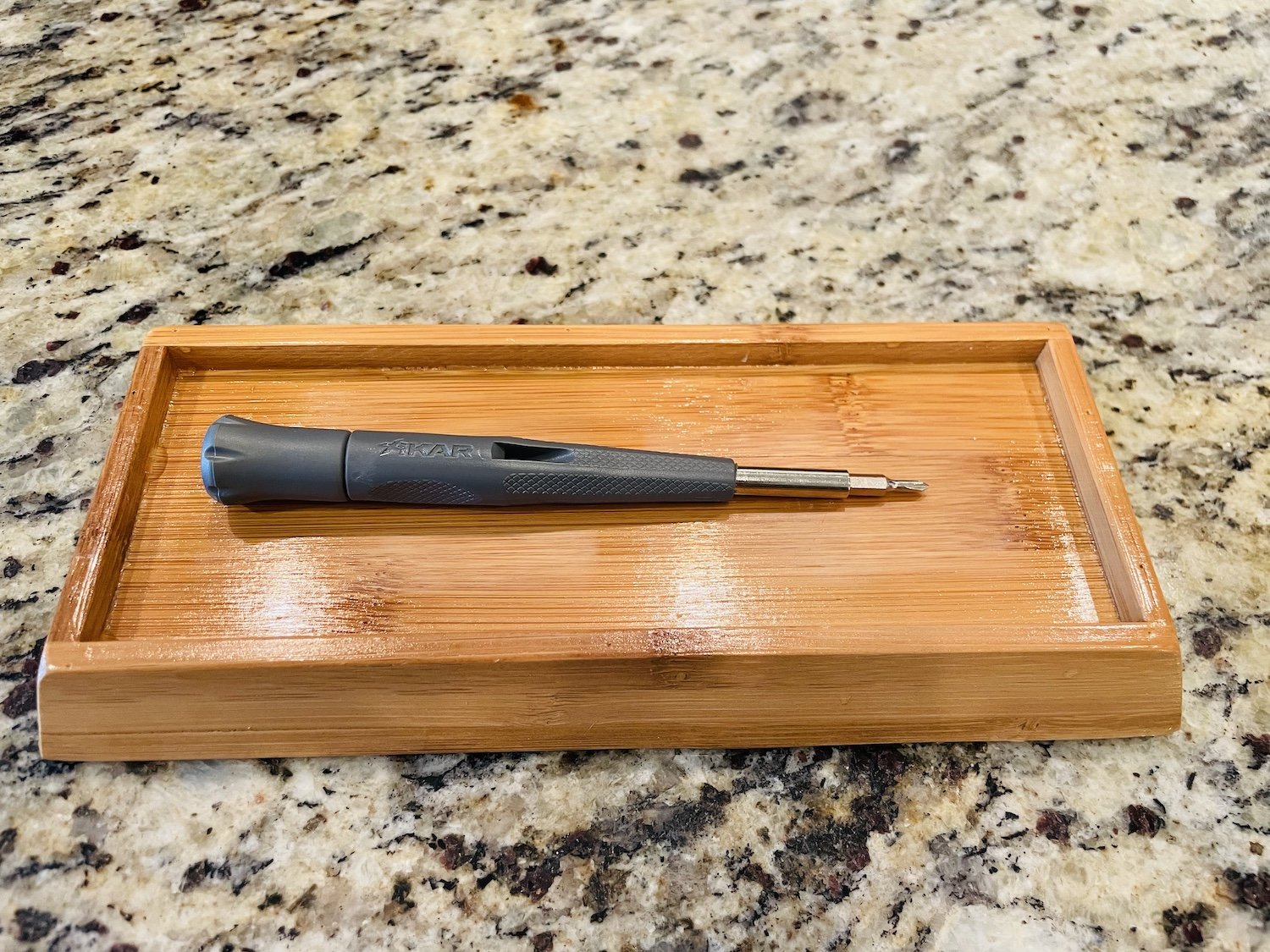
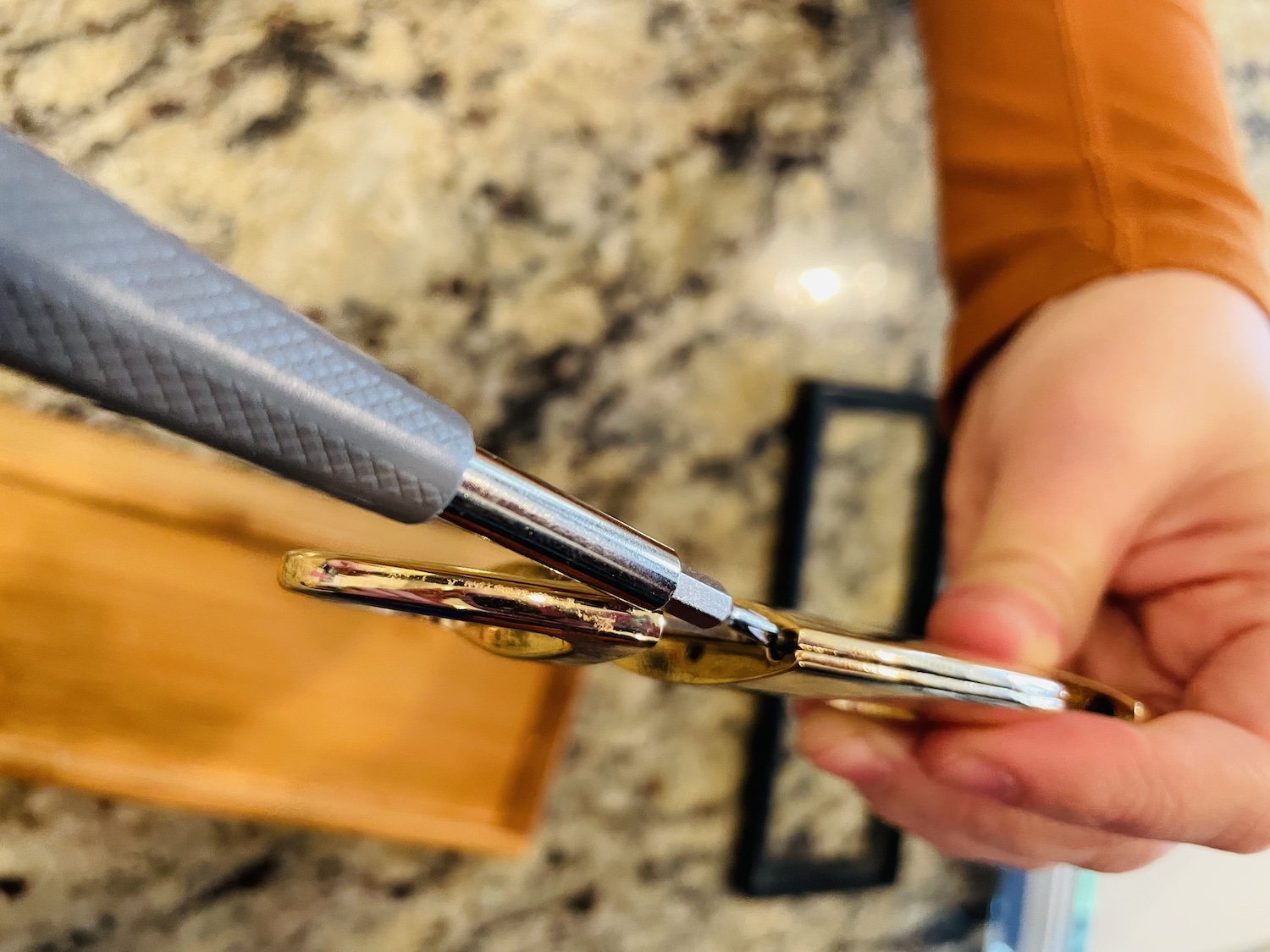
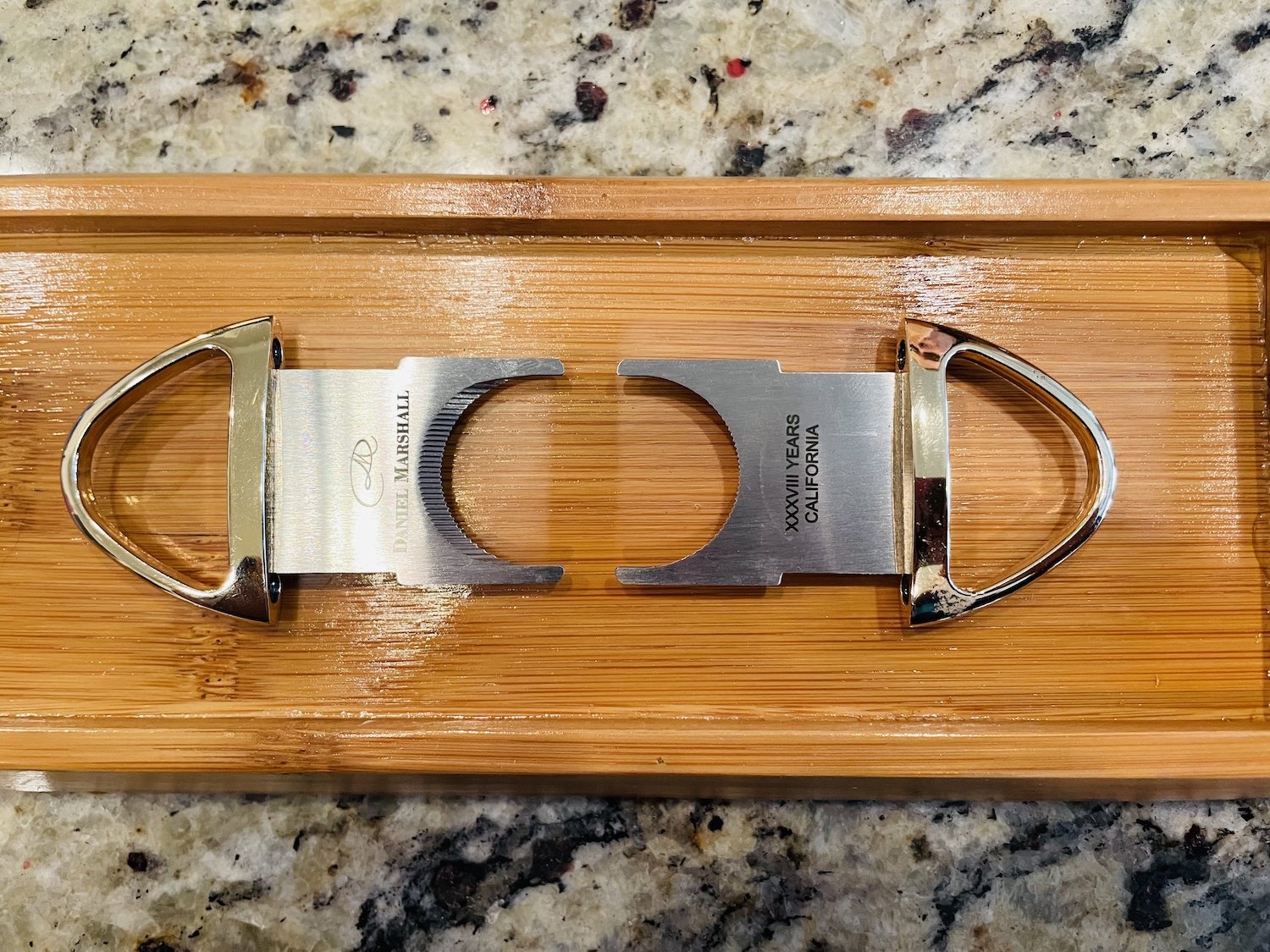
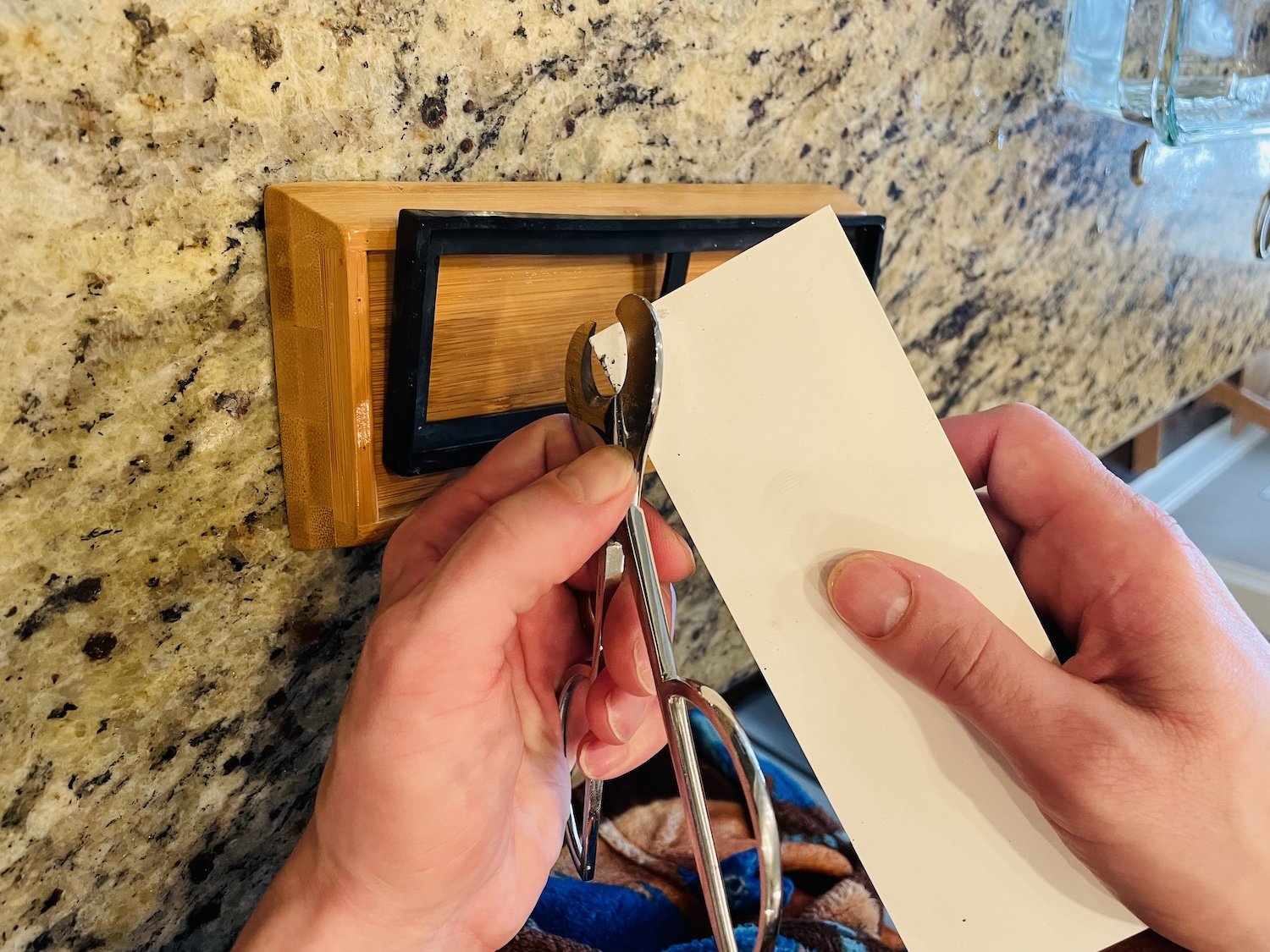
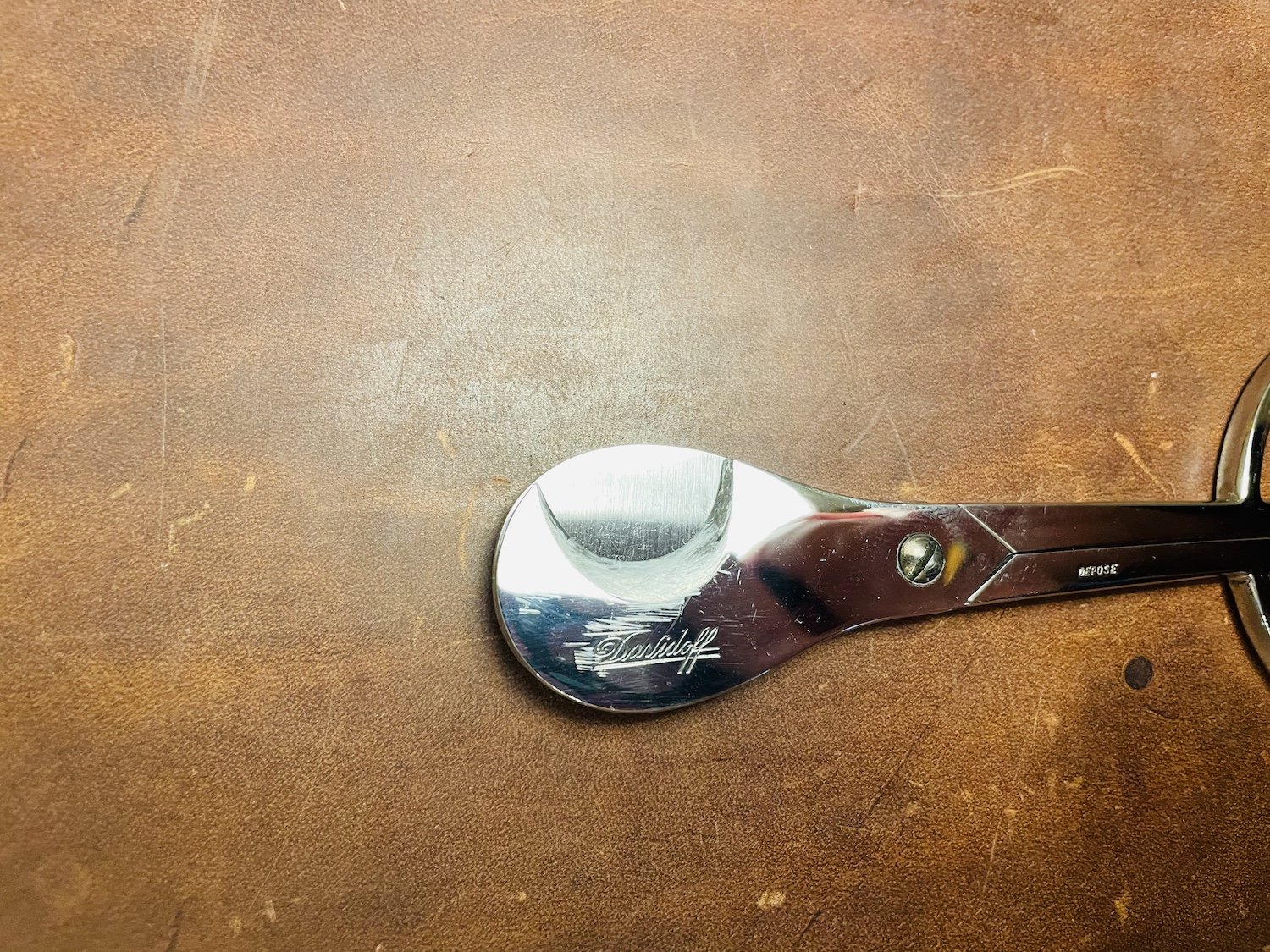
Steps I to IV
Additional Tips to Avoid Cracked and Split Wrappers on Your Cigars
If sharpening the blade of your cigar cutter does not solve the problem of your cigar wrappers cracking during cutting, then here are some other suggestions to help reduce cracked wrappers on your cigars.
Do everything within your power to maintain a constant temperature and humidity. Fluctuations in temperature and humidity “stress” or “shock” your cigars. This effect is largely due to the fact that warmer air holds more water vapor than colder air does. This is why cold air produces water droplets in the form of condensation (think of water beading on the bottom of your cold glass on a cold windowsill). Thus, fluctuations in temperature, even with relative humidity kept constant (via a Boveda pack, let’s say) will still stress your cigars. This is because the absorption of water vapor – moisture – into and out of the membranes of the cells of the cigar leaves is affected by temperature changes. You want the moisture content of your cigars to be between 12%-15% (which is typically accomplished within an environment 65%-70% of relative humidity). Although all cigars have to be shipped at some point, and will face some level of stress (less in nice weather months), the longer that you can rest your cigars in ideal temperature and humidity controls, the less wrapper splitting issues you will have. And your cigars will taste much better.
Use cigar scissors on cigars with a ring gauge of 50 or lower only. Cigar scissors do not handle cutting thicker cigars very well, in my experience. This is because of the leverage that cigar scissors use, which causes scissors to have the effect of “squeezing” thicker cigars as they cut them. This causes significant cracking of the cigar wrapper. (Scissors do work great on tapered cigars like torpedoes and other figurados, however; ring gauge refers to the thickness of the cigar where it is being cut, and not at the foot of the cigar).
The Flip Side of No. 2, above. Use guillotine/V-cutter/punch cutters only on cigars with a 50-ring gauge or thicker at the head of the cigar.
Lower the relative humidity in your humidor to 62%-65% RH. Sometimes cracked wrappers are caused by a difference in the moisture content of the filler tobacco of a cigar versus the moisture content of the wrapper leaf of that same cigar. This difference in moisture content occurs, most often, when cigars are over humidified in the humidor (as I believe most cigars are; 70% RH is too high for long term storage). This difference in moisture content between the wrapper leaves and the filler leaves of the cigar can lead to cracking during cutting, as the difference in moisture content leads to difference in the “sponginess” of the leaf, leading to an inconsistent cut – and thus, ultimately, a cracked wrapper.
Leave your cigars in the cellophane. This is similar to Tip 3, above. Leaving your cigars in the cellophane creates a sort of mini microclimate for each cigar – a small fortress of (slightly breathable) protection for each cigar. Since each cellophaned cigar is contained in its own semi-permeable barrier, the moisture content of the cigars inside tends to even out and regulate. This creates an even moisture content between the wrapper leaves and the filler leaves and can lead to less wrapper cracking during cutting.
Parting Thoughts from an Expert
Cigar and coffee expert, Colin Ganley, in his excellent primer, Le Snob, writes: “To ensure that a cigar does not unravel in your mouth, it is essential to cut it cleanly and not too aggressively. The most common reason for a cigar coming undone is too deep a cut. Since cigars are held together at the head by tobacco extending just a fraction of an inch down the body of the cigar, it is essential not to remove too much of the head.
A standard and optimal cut is done by one or two blades which remove the cap. Ideally, a cigar’s head is only slightly trimmed. The end of the cigar, once cut, should reveal a flat surface of freshly cut leaves and none of the cap should remain. Any portion of the cap remaining on the head of the cigar will collect smoke and saliva and most often will create a bitter reservoir. It is telling that fancy cutters such a V-cut, fish-eye and others are not used by cigar makers. The only exception is the punch cutter, which is best used when the opening it reveals is slightly smaller than the diameter of the cigar.”
Best wishes to you for cleanly-cut cigars with no cracked wrappers!
Light ‘em Up!


